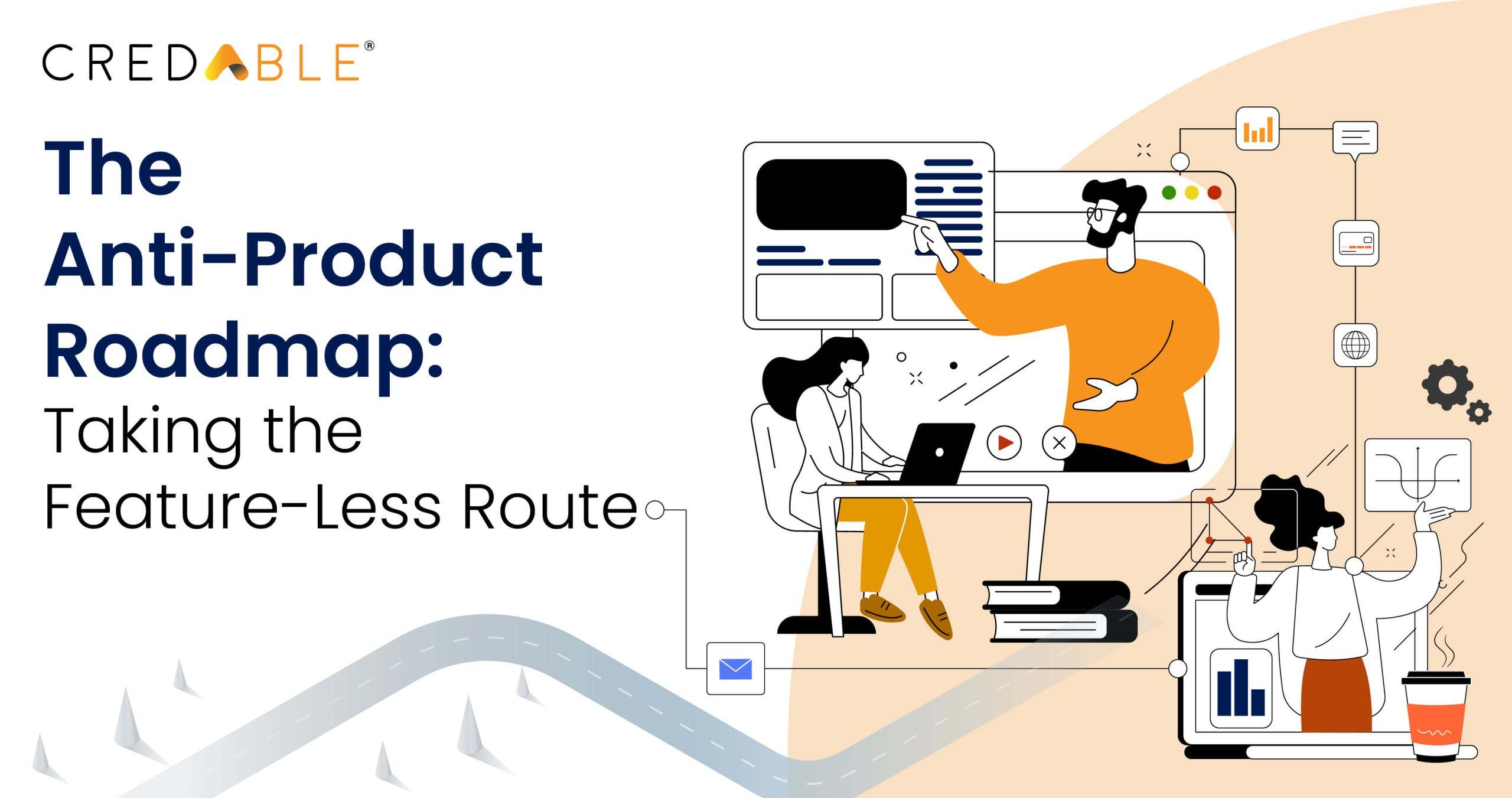Anti-Product Roadmap: A Deep Dive into Feature Streamlining (Part 2)
Let’s face it, the excitement we get in shipping a brand-new feature is unmatched.
Nothing quite like the nerves that take over when we decide to kill a feature.
In part one of our series on the ‘Anti-Product Roadmap’, we took a look at how businesses are now more open to killing features. Given the consequences of feature creep, product managers are ready to bring down deadweight, non-performing features that are costing the business.
As the adoption of the anti-product roadmap gains momentum in the tech industry, let’s delve deeper to understand how to sunset product features. First up, we are taking a look at some of the more popular brands that have taken this route. We will then explore when it makes sense to remove features.
The big brands are not shying away from "killing features"
Apple did it not too long ago. They stirred quite a heated debate, possibly eclipsing the uproar caused by the shift from the 30-pin to the lightning connector, with its decision to eliminate the Phone Noise Cancellation feature from iPhone 13.

Source: Reddit
More recently, Slack followed suit.
Popular among remote-first companies, Slack's interactive screen-sharing feature permitted up to 15 participants to control screens during calls. While this feature was a hit with their power users, Slack decided to take down the feature. The Ex-Director of Product at Slack, Fareed Mosavat pointed out that the high costs and complexities of maintenance were key reasons for discontinuing the feature.
“Slack ultimately decided to kill this feature. First, it was a niche feature, with relatively low adoption, which was not strategically aligned with the long-term goals of the company. Second, there was a high cost and complexity with maintaining it, especially as we were working through a re-architecture of the front-end.”
- Fareed Mosavat, Ex-Director of Product at Slack
The anti-product roadmap: Parameters for judgement
We often see product teams steering away from their vision, out of fear of upsetting users. They end up loading their platform with features that add little to no value, cost money to support, and distract users from features that are core to their brand. It won't be long before their product becomes outdated, excessively complex, and burdened with technical debt.
The arrival of the anti-product roadmap has flipped the script for most product teams. The obsession with “less is more” drives teams to critically evaluate past feature launches. This leads them to retire features that don’t feel right for the current state of the product or user needs.
It’s important to ask yourself if the feature adds value or is adding to the complexities that your teams manage.
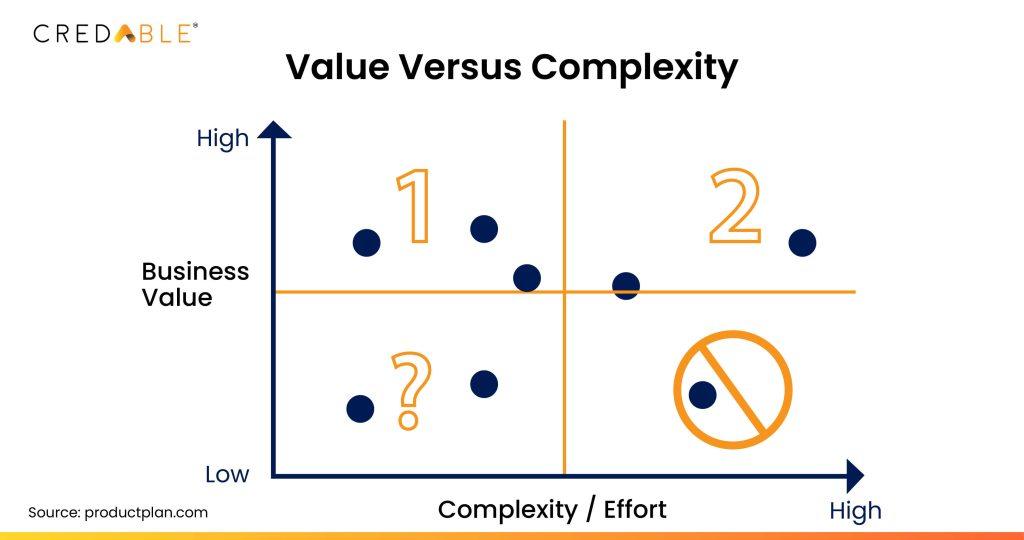
Undoubtedly killing portions of the product that you have spent hours developing and fine-tuning—is by far one of the most challenging calls for most product managers. From biases, and prioritising finishing tasks rather than considering “if you’re working on the right ones” to loss aversion, retiring features is never an easy decision.
Seasoned product managers tread cautiously and exercise thoughtful consideration when contemplating adjustments after deploying a feature to production.
So how do we make this concept of the anti-product roadmap stick?
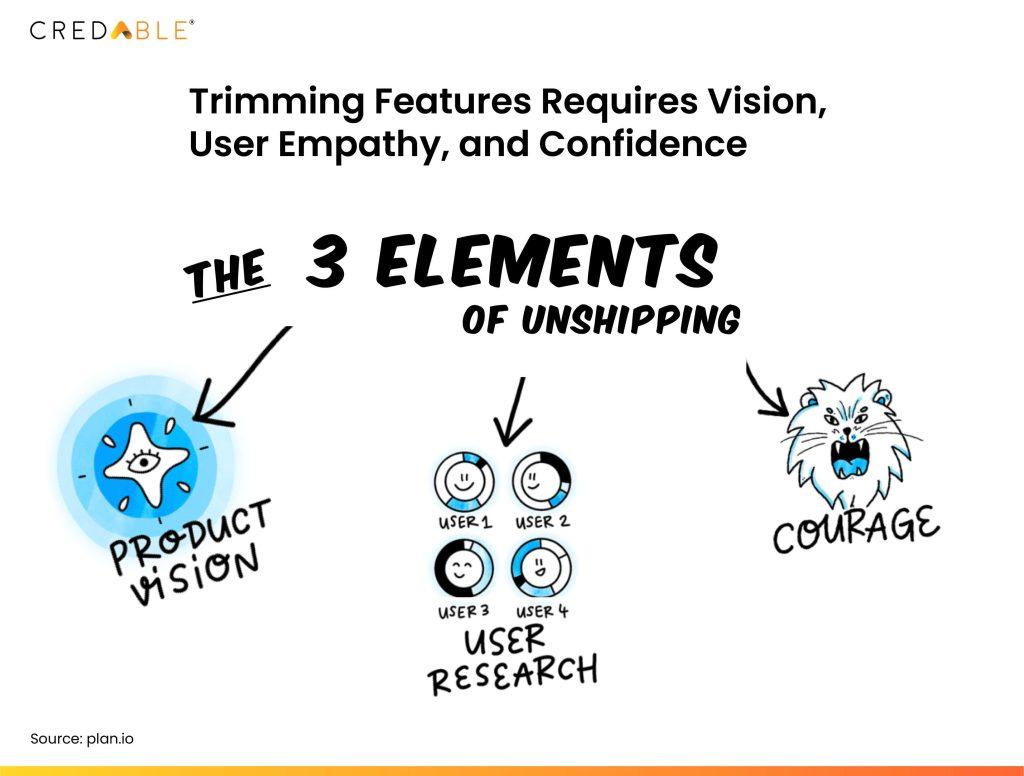
● Celebrate feature deprecation
While feature launches are met with celebration, it’s time we approach retiring features with just as much—or even more—joy. After all, your product team just saved your company the cost and effort of maintaining non-performing features.
● Prioritise less is more
In a market flooded with choices, opting for a streamlined approach reduces user confusion. The goal should not be to have fewer or more features, it is to keep the product simple through thoughtful feature trimming.
● Evaluate active users
Consider the activity level of users when assessing features. New additions often struggle to garner attention as existing features occupy prime real estate. Prioritise features based on user engagement, ensuring that actively used functionalities remain in the spotlight.
● Favour critical features
Assess the critical purpose each feature serves within the core of your product. A critical feature aligns with your product's essence, contributing meaningfully to user experience, and overall functionality—and remains in line with your vision. Focusing on such features enhances the core value proposition.
● Iterate first, launch later
Instead of committing to full-scale feature launches, aim to release ideas to a small user subset initially. This approach allows for rapid iteration and data collection before deciding on widespread implementation.
When should you kill a feature?
“Consider removing features that fall short of contributing to your brand, business goals, revenue, or cost targets.”
It’s as simple as this—if your feature is not contributing to a goal that you have set, it’s time to remove it.
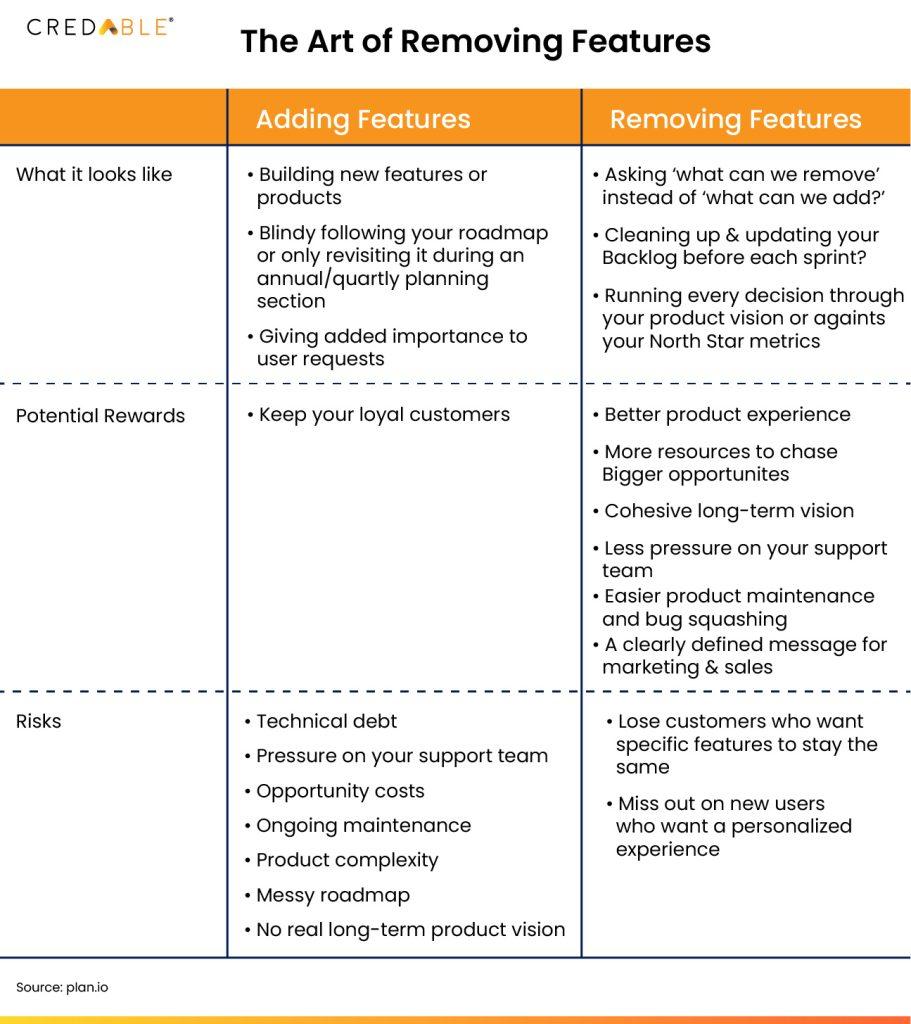
Before you set out to retire a feature, ensure you do an in-depth analysis of your customers. This can include talking to customers, screening user feedback and social media engagements, monitoring in-app analytics, and checking exit surveys.
Top reasons to kill a feature:
➔ Missed the market: When a feature fails to resonate with the intended audience or align with evolving market demands.
➔ Diminishing returns, obsolescence: A ‘once valuable feature’ yields diminishing returns or becomes obsolete in the evolving landscape.
➔ Unsustainable and buggy: When a feature struggles to gain traction, proves unsustainable, or introduces persistent bugs.
➔ Misalignment with the vision: When a feature deviates from your product's long-term vision or is introduced merely for novelty's sake.
Product prioritisation frameworks come in handy here. The Opportunity Scoring Model is one where opportunities are ranked by assessing their importance and client satisfaction. Once you've outlined your desired outcomes, engage clients with two important questions:
➔ How crucial is feature X to you?
➔ Share your satisfaction level with the current solution.
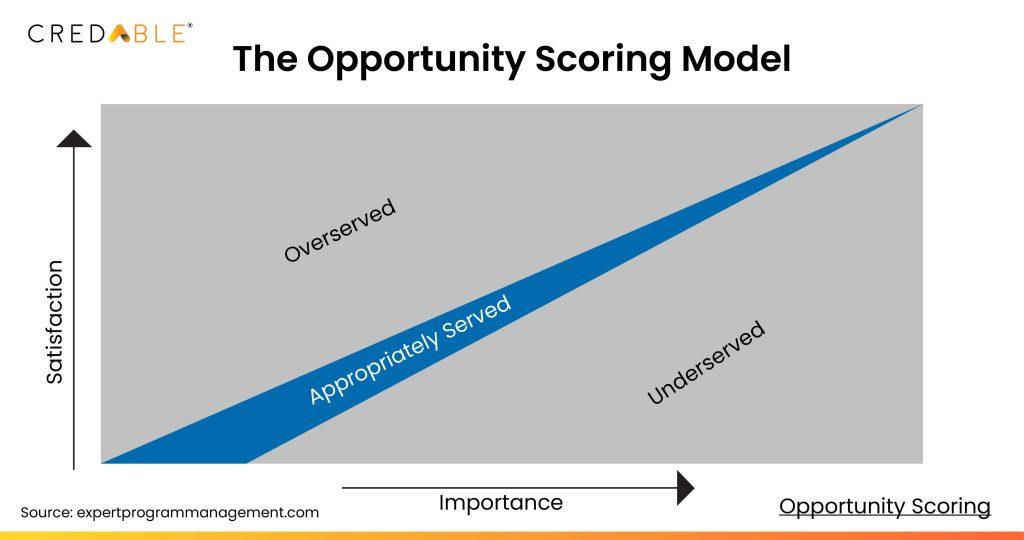
Example of feature dilution
To understand the importance of the anti-product roadmap, let’s take the case of two hypothetical brands—SocialSnap and Connectify.
As Connectify expanded its features beyond its core offering, social networking—user engagement became fragmented. The influx of unnecessary games, filters, and diverse functionalities diluted the platform's identity, resulting in a loss of prominence as users found the experience cluttered and departed for more focused alternatives.
| Aspect | SocialSnap (Product A) | Connectify (Product B) |
|---|---|---|
| Core Offering | Photo and video-sharing platform | Social media platform with added features for enhanced UX |
| Key Features | Photo and video posts | Additional features: polls, games, augmented reality filters, etc. |
| User Experience (UX) | Simple and focused | Diverse but potentially overwhelming with added features |
| Expense and Effort | Streamlined development and maintenance focused on core features | Increased expenses and efforts to develop, maintain, and troubleshoot a variety of features |
| Time Commitment | Efficient use of development time | Longer development cycles for new features, potentially delaying core updates |
| User Retention | Users accustomed to core features | Users may be divided; some may appreciate added features, while others may find it cluttered |
| Examples of Feature Dilution | None | Integration of unnecessary games, complex filters, and other non-core features |
| Feature Cancellation | SocialSnap occasionally removes features that don't align with the core experience | Connectify might face challenges if users are attached to specific features that are later removed for simplicity |
| Long-Term Viability | Stable, evolving within its core identity | Risk of losing focus and becoming less competitive due to feature bloat |
Bottom line
In the world of digital platforms, continuously evaluating and retiring features is key to staying user-friendly. It's about removing what doesn't work and focusing on what matters, in turn, creating a product that's resilient and always relevant to users. This iterative process, grounded in user data and meaningful discussions internally and with the customers, facilitates a constant quest for an optimal user experience.
Think Working Capital… Think CredAble!
